Material / Commodities
Cotton
Material
Natural fiber from the seed hairs of capsular fruits
General
The name cotton refers to the general origin of the fiber material as a collective name for various
cotton trees or shrubs such as silk-cotton tree, kapok and cotton.
Origin
Natural recovery of the fiber material cotton from the dehiscent capsules several species of shrubby
mallow families (Gossypium). The cultivation is only possible in tropical and subtropical areas ("cotton
belt": 35 ° SB to 45 ° NL). In addition to winning the fiber material, the plants are also used for
edible oil extraction (seeds) and as protein-rich concentrates (oil cake).
Cotton contains more than 80% cellulose. In addition to the water content (6%), it offers pectinates,
fats, hemi-cellulose, proteins and minerals (Σ 12%) as fibre accompanying substances.
Chemical composition of cellulose: As macromolecule of hundreds of thousands of atoms cellulose as well
as starch belongs to the group of polysaccharide. Through photosynthesis thousands of glucose molecules
(carbohydrates) are formed from carbon dioxide and water with sunlight and linked via glycoside bonds.
These results in rope-like structures, the long chains of (C6H10O5)-monomers are bundled side by side.
Production
Worldwide cotton is grown on about 33 million acres of. To a large extent the "conventional" method has
devastating effects on humans, animals and the environment. In contrast, the organic cotton (*
controlled biological cultivation, organic cotton) considers all aspects to prevent pollution: from "the
cradle to the grave" every step of the textile raw material is affected by the very high ethical and
healthy standards:
1. The cultivation of organic cotton completely abstains from the use of pesticides.
2. At the harvest of the cotton, the environmentally friendly (and social) manual method is
preferred.
3. Processing of the controlled biological cultivated cotton abstains from toxic or aggressive
chemicals.
4. After the end of its useful life an introduction into the natural cycle is possible, e.g. through
composting.
Use
Since 5000 years substances for various purposes are made of cotton. Globally, 75% of all fabrics
consist of cotton. Favorable physical properties of the natural product more recently opened it up to
other applications as insulating material (sound, heat).
Properties
Structure: The gently treated natural material has a much higher tensile strength and elasticity
(persistency!) than e.g. mercerized fabric. Due to the specific processing, cotton is gentle and
extremely soft but the skin sympathetic fabric remains cleanable.
Without interfering electrostatic effects of the breathable material, the existing high potential to
absorb moisture also promotes a comfortable body and sleeping environment.
Chemically: Unlike "normal" cotton, the material is characterized by the absence of chlorinated pesticides, DDT, lindane and PCP. Quality studies also show that other pyrethroids, pesticides and herbicides as well as toxic paint chemicals are not found!
Medical: Three properties have a direct and indirect impact on human health:
1. The physical properties have a positive effect on the sleep environment.
2. The absence (of existing spectrum in conventional products) extremely harmful chemical residues
generally reduces the immune burden and potential risks
3. A dramatically reduced germination and fungal contamination diminishes and prevents allergic effects
that can be caused by mold. (And: mildew can not appear.)
In total the high lying comfort and active health care can only be achieved through the practice of
holistic environmental protection.
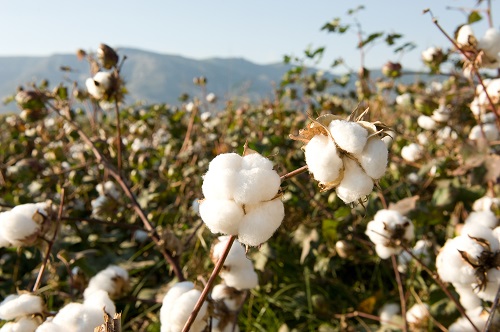
Quality features
The entire process of material cultivation meets the highest ethical standards. All components from the
holistic environmental effects to social and preventive health care are considered.
Quality testing for pollutants: all studied pollutants are undetected, in spite of modern instrumental
analysis techniques (gas chromatography, IR spectroscopy).
Ecology / Ethics
As known, the conventional cultivation of cotton leads to significant environmental impacts: the soil is
leached, pending groundwater and soils are contaminated with significant amounts of toxin. Apart from
growing in huge monocultures, the subsequent conventional treatment also proves to be a venomous slingshot.
Organic cotton is grown without pesticides and organic fertilizer and meets the stringent requirements
of organic farming.
In addition, the renewable resource is picked by hand. This means, the job labor market is supported and
workers are not exposed to the enormous health burden as the field workers in conventional farming (who
may even need to accept poison showers from aircraft) - the average age of those working on cotton
plantations is under 40! This is due to the poisoning, as well as the catastrophic living and nutrition
circumstances under which under which these people and their families must live. The same is true for
conventional coffee - / banana / Rose cultivation (just to mention the most prominent ones). Projects
which establish organic farming (most at least) also consider the people, fair pay which allows a
'dignified' life and educational opportunities for children (school until 14, instead of field work from
4).
Please see www.biothemen.de
to glossary: Cotton to the collection bioFUTON to the collection DX FUTON up
Fleece Wool
Material
Natural material of animal origin: fleece wool from Merino-sheep or French free range sheep "Plein Air" from Texel-, Charollais-sheep.
General
For about 7000 years, sheep are used by people as a source of food and clothing. Also other species
suitable for spinning due to their hair length and fineness are used as a wool source:
goats, rabbits, llamas, alpacas, camels, etc. The proportion of animal fibers in world wide production
nowadays is only about 5% compared to cotton and synthetic fibers.
Origin
The most important: our wool comes from France, Plein Air Wool, of the area between Poitiers and Limoge or from the Austrian ‘Mühlviertel’, the region around Linz. (See below ...) It is not from treated animals, will not
be shipped halfway around the world, not treated with insecticides, etc.
Furthermore we use the finest wool: extracted from
the live shearing of Merino sheep. Their coat in comparison to other types
of wool (‘fleecy layered’) has a very fine, highly crimped and resilient nature.
Chemical composition of the wool: wool(also: hair, nails, horn, feathers) are proteins and like those consist of amino acids. In wool these are 18 different amino acids, whereas the sulfur-containing cysteine caters for the natural curl of hair. A natural accompanying substance in wool is lanolin, which is chemically considered part of the wax groups. The by-product of the wool production, a substance falsely named wool fat, is utilized for application in mild and tolerable ointments or (baby) creams.
Production
The living shearing generates the so-called sweat or dirt wool with about 50% impurities (sand, dust,
salt, wool wax, etc.). Instead of through aggressive chemical agents,
the necessary cleaning step is carried out only with soap. The analysis results of the wool: no findings
show that no pesticide baths (against parasites) were applied to the sheep.
Use
Main application is the spinnable natural material for knitwear (sweaters, scarves, socks, etc.) and
carpets. Because of the special material and climate properties of the natural material,
it is also suitable as a component of high-quality mattresses.
Properties
Biological: keratins provide little target points for biological attacks by microorganisms because of
their chemical structure. Untampered wool and hair can survive for long periods of time.
Physical: In contrast to conventionally treated, chemically-extracted wool, the wool used due to the
lanolin content furthermore has the properties:
1. Absorb large amounts of moisture (and emit!) without the wool feels wet.
2. Wool acts as an odor filter that absorbs odors - and hardly picks up dirt.
3. Wool has the best warmth retention properties of all fiber types through air as an insulator.
4. By the crimping of the wool a distance from the skin is always provided, which, for example
facilitates the transport of sweat without feeling cold (evaporative cooling).
Chemically: Wool is relatively chemically inert, resistant to acids and durable under normal
environmental conditions.
Medical: The outstanding physical attributes such are used e.g. for heat treatments in rheumatoid
arthritis and other joint diseases.
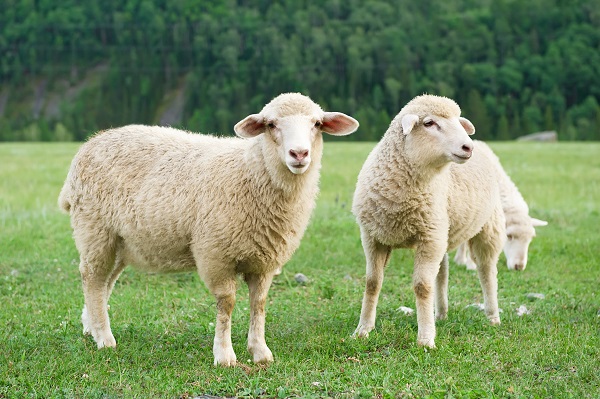
Quality features
The wool we use has a certificate of origin with the corresponding analytical studies of the chemical
composition and physical parameters.
Quality testing for pollutants: all studied pollutants are undetected, in spite of modern instrumental
analysis techniques (gas chromatography, IR spectroscopy).
Warranty
All quality information is supported by independent third parties in foreign investigations in addition
to the operational self-tests. The Eco-Environmental Institute stands for scientific objectivity and
accuracy.
Ecology
The renewable resource wool is obtained with the live shearing. Careful processing of our wool abstains
from harsh chemicals. Ecological problems can however arise from the widely practiced,
conventional treatment of animals and wool with chemicals: thereby pesticides in big amounts get into in
the environment and in the wool!
1. "Plein-Air" Fleece Wool
Plein-air sheep come from the Portiers and Limoges area in France. They live outdoors almost all year
round. The sheep are descended from the Texel and Charollais breeds.
Texel new wool brings good color, cleanliness and length, Charolais new wool the bulkiness. "Plein-Air"
new wool consists of pure, particularly long natural hair with a very good fill power.
This is favored by the optimized wool mix of different French sheep breeds as well as by the weather and
the geographical location.
The label "Laine de France" guarantees the French origin and European processing of the wool. This label
is controlled by farmers, traders and processors at the French Wool Association.
The wool we use has a certificate of origin with the corresponding analytical tests of the chemical
composition and physical parameters. Quality investigation for pollutants: despite
the most modern instrumental analysis technology (gas chromatography, IR spectroscopy) none of the
pollutants investigated are detectable.
2. Alpine Quality (Alpenland-Qualität ®) Fleece Wool
We have created this brand to set an example for clean wool of fair origin.
More and more consumers are irritated by the sometimes devestating pictures of industrial sheep breeding
occuring overseas - with good reason, we believe. With us, this hasn't been an issue ever since.
We are obtaining our wool from Austria since 1989. It originates from the spring shear of individual
shepherds which is gathered by regional sheep farming cooperatives and then resold.
The sheep that provide the wool for your place of sleep travel in small herds from grassland to
grassland, looked after by humans and dogs. Because of that, our sheep's wool meets the quality
requirements of controlled biologically animal husbandry in chemical analyses. The quality of the fibres
is just like its origin and its purity: soft and powerful. That's important, since sheep's wool has an
important and good function in mattresses: ensuring optimal climate and hygiene. This is why a layer of
our fine wool always surrounds the core of our mattresses/futons.
to glossary: Fleece wool to the collection bioFUTON to the collection DX FUTON up
Natural Latex
Material
Natural rubber latex from plant milk juice
General
The name caoutchouc refers to the rubber South American origin of the plant from the family of
Euphorbiaceae: CA HU-CHU. Indian-Quechua for: weeping tree. Botanical name: Hevea brasiliensis. German
Name: Para rubber tree
Origin
Natural recovery from milk (latex) of the rubber tree, which is still growing in its native South
America, but now mostly located in South Asia, Vietnam, Malaysia, Sri Lanka, ...
Chemical composition of the rubber: latex, an aqueous dispersion
of natural polymers,
Contains 30-35% rubber components, 60-65% water, proteins,
lipids (fats) and carbohydrates with each about 1%. Mineral constituents
(ash): 0.5%.
The building blocks (monomers) of the rubber are the isoprene units: 2-methyl-1,3-butadiene, (C5H8)n
with about n = 3000 units in the backbone (polymer). The isoprene is the preferred component of nature
in the animal kingdom (e.g. cholesterol) as well as in the plant kingdom: here the so-called terpenes
based on isoprene influence the composition of many beneficial essential oils.
Production
Gentle vulcanization of milk for spatial networking of the existing isoprene chains. Generally the
application of environmentally harmful CFCs for foaming is renounced. This also applies to abstaining
from UV stabilizers. Several additional cleaning steps remove any remaining traces of substances from
the manufacturing process.
Properties
Biological: The antibacterial and anti-dust mite properties promise sensitized people relief of typical
symptoms of dust allergy (nasal and eye irritation).
Physically: Various degrees of firmness, point-elastic behavior and high flexibility, breathability and
vapor permeable (moisture control) through micro-fine air chambers. As THE rubber elastomer caoutchouc
can be stretched up to eight times (!) of its length, but always takes its original shape.
Chemically: No evaporation of volatile chemicals. No traces of nitrosamines e.g. commonly used in
synthetic latex.
Medical: In addition to the material-specific, reduced germs and mites’ risk, the health-promoting
properties of the climatic minimized pollutant - and thus the health preventive -natural materials are
to be highlighted. The proven concept of the rubber cups with specially shaped profiles (surface and
channels) combines manufacturing technology the high orthopedic standards and comfort in an ideal way
with the inherent material advantages.
Quality features
This natural product is finally cleansed from remaining adhering proteins and the radicals vulcanizing
agents.
Quality testing for pollutants: all studied pollutants are undetected, in spite of modern instrumental
analysis techniques (gas chromatography, IR spectroscopy).
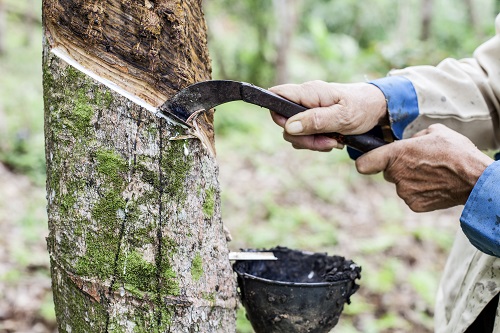
Purity
We only buy and process certified raw materials which have been tested and verified regarding harmful
substances and purity by the ECO-Institut through their producers.
Ecology
Use of the weeping tree has a long tradition. The milky juice can be harvested for decades without
harming the plant. In contrast to the production of synthetic rubber products from petroleum the natural
way proves to be gentle: minimal resource consumption and minimal emissions during processing.
With the idea of sustainable development and the now recognized importance of the rain forest, the wild
and uncontrolled deforestation for creating plantations in emerging developing countries is an issue of
the past.
With the purchase of this natural product, the buyer contributes to environmental protection and
development aid.
Note
Only a material that has a content of 100% natural rubber merits the term natural latex mattress from
us. There are unfortunately a lot of products in the market with a Nature-/Synthetic-mix that are sold
as natural latex. Also there are features of the 100% natural latex in which however extenders (such as
chalk) are added in order to facilitate the production. You recognize these amongst others through the
fact that the top and bottom of the core are not equal: closed top and slightly wavy bottom with pin
holes. This is natural latex, but the through the extenders it is brittle.
Our natural latex is always 100% natural and of high density, because only thus a futon contemporary elastic occurs and because it holds extremely long.
Here is the current Certificate from the Eco Institute of the chemical product analysis (according to Qul).
to the glossary: Natural latex to the collection bioFUTON to the collection DX FUTON up
Coconut Fiber
Material
Natural materials of vegetable origin. Fruit fibers that are rooted in the hard shell of the coconut.
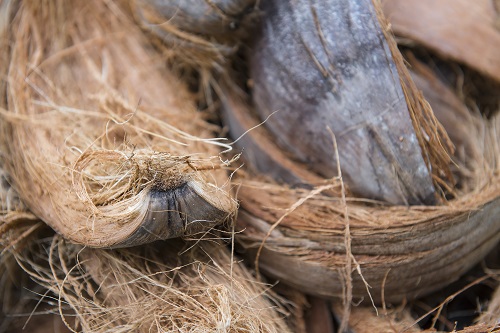
General
The coconut palm is used with all its components by people: the wood is used as a building material, the
fruit as food, fermented and burnt palm juice as an alcoholic stimulant. In addition, coconut fats and
oils are obtained for human consumption or for the production of soap and candles from the plant. As the
only of all pericarp fibers coconut fiber is also spinnable.
Origin
As the only species of the genus of feather palm the coconut palm (Cocos nucifera) grows in the entire
tropical coastal area. The cultivation is traditionally operated especially in India and Sri Lanka.
Chemical composition of coconut fiber:
In the organic plant material the typical macromolecules can be found, composed from fibrous material.
Here the spinnable commodity addressed is the cellulose content, which - as in cotton, linen and other
plant species used for textiles - from the sugar-based building blocks to a polysaccharide in long
chains. The chain length and the degree of crosslinking of the building blocks are also specific to each
plant - with a direct impact on the physical properties of the fibers (hardness, spinnability, etc.)
Production
The coconut fibers are extracted from the bass layer of the coconut. Picking before maturity yields
fibers with a lower lignification. By the so-called "toasting" over several weeks in brackish water the
fibers can be peeled off. Then they are beaten, stomped, and tumbled to achieve a higher flexibility of
the fibers. Finally, 15-35cm long coconut fibers are washed and dried.
Use
Because of its resistance to water, the fiber used to produce hawsers as long as can be remembered. A
variety of household items such as brooms, brushes, etc., but also mats and rugs are made from coconut
fibers. The resulting yarn quality of the fibers (color, clarity, degree of elongation, thickness, etc.)
depends on the degree of maturity of the nuts and the applied roasting and spinning process.
As stuffing material it is a highly popular plant alternative as a so-called 'vegetable product
horsehair'.
Properties
Biological: Coconut fibers have strong resistance to microbial decay processes (and moisture): due to the lack of
fat, they offer no suitable soil for microorganisms.
Physically: The fibers are very extensible whilst having a low specific gravity. Through the tube structure, they
act thermal insulating as well as sound absorbing and are extremely durable. Furthermore, the
hygroscopic fibers - depending on the degree of humidity and room humidity – can absorb or emit water.
Thereby the material with a moisture-regulating function arises..
Chemically: The fibers have a high resistance against chemicals (sea water!).
Medical: The properties of the material have a positive effect on people who respond particularly sensitive to
chemical and environmental influences. The low germ density will benefit allergy sufferers. The humidity
control generates a pleasant cooling effect when using coir mattresses.
Quality feaures
According to analytical examinations the coconut fibers used in our products are guaranteed
'pollution-free'. (Note: nothing can be 100% free from harmful substances - depending on the
definition.)
While coir is sometimes (absurdly) burdened with e.g. toxic lindane or carcinogenic pentachlorophenol,
DDT, formaldehyde etc., we can exclude this from our coconut products.
Quality testing for pollutants and their possible release:
all studied pollutants are undetected, in spite of modern instrumental analysis techniques (gas
chromatography, IR spectroscopy).
Ecology
The use of the coconut palm is largely in line with the requirements of modern environmental protection.
The undemanding tree needs no intensive treatment, harvested with the same method for thousands of
years. In general monocultures are not created for this purpose. The processing of the renewable
resource is without harming the environment. In new and innovative projects the coconut wastes are
converted by composting it into a valuable organic fertilizer. Fungal cultures help to unlock the strong
woody material which otherwise does not well compost without vaccination. The rural and labor-intensive
"coir industry" thus fulfills a valuable contribution to the local and global environment and makes a
social contribution in stabilizing the cultivating countries.
to the glossary: Coconut fiber to the collection bioFUTON to the collection DX FUTON up
Horsehair
Material
Natural material of animal origin: horse hair from the mane and tail.
General
Horsehair has been used since the beginning of the 19th Century as a cushioning material, distinguished
by its spring. The use of the natural materials over the past decades through the use of springs and
synthetic foams has strongly decreased. As environmentally friendly material horsehair is now being
rediscovered as a raw material with excellent attributes without the chemical side effects.
Origin
Only the best horse hair (as with wool!) is used in mattresses used: mainly from Mongolian breeds whose
hair stands out because of its length (15cm), density and fineness from other races. Although the
horsehair
Chemical composition of horsehair: the hair (also: wool, nails, horn, feathers) are proteins and like those consist of amino acids. The group of these protein structures is considered under the chemical term keratins. Despite a very strong structural similarity with wool, horse hair has a greater strength and durability due to the geometry of macromolecules.
Production
After the “hair cut" the natural raw material is cleaned with soap. No other chemical agents are used,
which may result in damaging the natural self-cleaning abilities of the hair. After purification, the
protein fibers are prepared for spinning and finally processed into mats.
Use
In addition to the aforementioned use as stuffing, horsehair is also used as a raw material for yarns,
threads, and insert-linings. Pure horsehair fabrics are also needed for the production of fine hair
nets. The main use of horsehair nowadays is part of quality mattresses, good brooms and textiles.
Properties
Biological: keratins provide little target points for biological attacks by microorganisms because of
their chemical structure. Untampered wool and hair can survive for long periods of time.
Physical: The natural crimp of horsehair mattresses causes for a high filling and spring. In addition
the elastic properties of the extraordinarily good, moisture-and heat-regulating functions of the
natural material must be mentioned. Another advantage is reflected in the self-cleaning capacity: scents
are absorbed by macromolecules and thus "deodorized".
Chemically: Horse hair like wool is relatively chemically inert and resistant to acids. In comparison to
the already durable wool, horse hair is more durable in normal environmental conditions.
Medical: The physical properties mentioned above can be used medically just as wool. The heat function
can have a positive impact on blood circulation and joints.
Warranty
All quality information is supported by independent third parties in foreign investigations in addition
to the operational self-tests. The Eco-Environmental Institute stands for scientific objectivity and
accuracy.
Ecology
The use of this natural material is largely in line with the requirements of modern environmental
protection.
With the purchase of this natural product, the buyer contributes to environmental protection and
sustainable economy - and avoids synthetic products and their often negative environmental
characteristics.
Note for demanding customers
Caution! On the market there are synthetically produced, monofilament products
with intricate details such as natural horsehair: The Chemical horsehair. Furthermore fiber structures
similar to horsehair are obtained from vegetable origin of the dwarf fan palm and Tillandsia.
to the glossary: Horsehair to the collection bioFUTON to the collection DX FUTON up
Leaflet Bioneem / Milbopax
Since the wonderful invention of Prof. Dr. Remboldt (Max Planck Institute), the house dust allergy in
the mattress sector
(as well as upholstery, carpets, .....) has become a much smaller problem. At least those affected will
no longer need to abstain from natural mattresses and can use the time spent washing mattress covers
better.
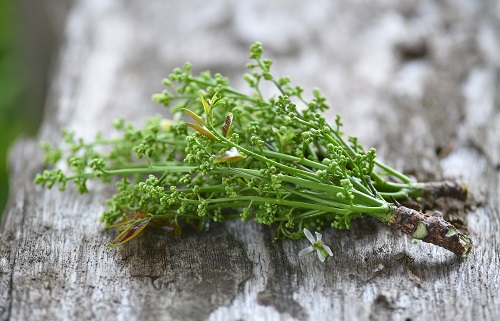
This agent is used under different names commercially (in the pharmacy under Milbapax) and is based on
the drug formulation TN-MP-100. This preparation consists of active substances, such as e.g.
azadirachtin, which is extracted from the oil of the seed fruits of the neem tree and are highly active
effective against mites (arachnids). Long-term tests in the 90s (the substance is on the market since
1998) have shown that the effect of the substance on a new mattress lasts for three years. We recommend
house-dust allergic people to treat the mattress for the first time after two years and then annually,
whereas a spray bottle (100ml) is sufficient for a mattress size of 100x200cm. The mattress is sprayed
evenly on the outside and the inside, (if possible); The slight odor, which originates from the solvent
evaporates quickly.
The effect of this natural resource is very good!
To clarify the allergy-inducing effect and the effect of the agent some information about the mite: There are approximately 30,000 different arachnids. Several dozen of them are listed as local mites. The average 0.15mm to 0.5mm wide and thus barely visible insects that are basically everywhere (!) and therefore unavoidable actually have a useful function, namely the removal of dirt on the smallest scale. Related to man and his environment its effects, the exterminating of skin scales, grease residues, etc., so mostly human protein. Therefore what the mite is excreting is also a form of protein, resulting in an allergic false reaction in the body of an allergic person.
The mites, which multiply considerably in the spring (natural rhythm), develop with good food source, such as e.g. a bed which offers massive populations in the five-and six-figure dimension within a few years. Then thus formed excrement creates an impressive size that bothers the house-dust allergic person. The microbial small particles stick to the swirling house dust which we inhale with air and therefore giving the allergy its name.
Now if the mattress (the upholstery, carpet) is covered with bio-Neem (TN MP100), the mites take it in during ingestion and therefore become sterile. Secondly, it interferes with their general supply of bitterns (chitin) and leads to the death.
Since mites are constantly everywhere and therefore cannot be avoided that they get into even the best-maintained bedrooms, the mite can just be killed this way. The efficiency of the agent is higher than that of 'washing', because the mites, meaning the cause, can be reached.
We offer each mattress with bio-Neem equipment, but recommend the cheaper self-treatment of the new mattress. Older mattresses, up to 3 years may also be treated. However, we then recommend the use of double the amount.
More information on the development and tests can be found here as PDF:
TN-MP-100/Entwicklung
DATASHEET: NEEM
Material: Neem oil. Natural materials of vegetable origin, oil from the seeds of the neem tree.
General: The neem tree as a relative of the mahogany tree belongs to the family Meliaceae. The up to 20 meters high tree is modest and can be over 200 years old. For millennia, the Neem tree is used in its entirety (fruits, seeds, leaves, roots, oils) in Ayurvedic medicine
Origin: The Latin name Azadirachta indica reveals next to this tree inherent ingredients (azadirachtins) the country of origin - India. Previously, the distribution area was limited to the northeastern India, Burma and Bangladesh. As a very undemanding plant, the tree was planted as windbreaks, shade and especially against soil erosion then in Central America, Africa, Hawaii and the Philippines.
Chemical composition of neem oil: The ingredients and their concentrations obtained from the seed oil are subject to natural fluctuations, which are typically to be expected in natural products. The traded neem oils consist for the most part of different vegetable oils. As a major chemical component the insect retardant agent azadirachtin (and further, various derivatives of this material group) occurs. The groups of the limonoids in the oil are characterized by the strong fungicidal effects. The proven phenol derivatives in the solutions act on the one hand anti-inflammatory; on the other hand they strengthen the immune system. The ingredient salannin acts as a powerful repellent to insects.
Production: After ten years a yield of about 50kg is to be expected from a tree. The seeds contain up to 40% neem oil. First the seeds of the olive-like fruit have to be dried to prevent putrefaction. Afterwards, the oil is increased traditionally by pressing the seed, but also obtained through extraction with solvents.
Use: For thousands of years the tree is used daily by the majority of the Indian population. The branches are used as a natural toothbrush against gum and dental disease - in Germany Neem toothpaste and soaps are available for some years. Even as fuel and fodder the plant is utilized, generally, however, the medical and plant health effects are appreciated. The list of these applications and formulations is a mile long: the Neem plant the Indians as a tree for everything.
Properties:
Biological: Neem oil is acting as a natural, biological protection against dust mites and other pests
such as Moths. Neem extracts can act sterilizing on insects, growth and skinning retardant, but also
grub repellant and grub inhibiting. Particularly worth mentioning is the excellent effect on mites: with
neem extracts covered textiles remain free of mites for a very long time.
Physically: oily liquid
Chemical: For humans and mammals neem is also non-toxic in high doses and therefore toxically
harmless.
Medical: Because of its biological effects, neem oil as a sanitizing active ingredient in the preventive
impregnation mattresses both for allergy prevention as well as for the symptoms of existing dust
allergies eminently suitable.
The natural product is used as a drug in a variety of applications, such as for blood purification,
insomnia (!), rheumatism, stomach pain, nausea and many more.
Known are also the fungicidal (e.g. against Candida) and antibacterial (e.g. against pyogenics)
properties of Neem extracts. But that’s not it: immune-boosting and anti-inflammatory effects can be
attributed to neem as well as its prophylactic, anti-viral (e.g. herpes) properties.
In the distribution area of the neem tree its components are also used to relieve pain and fever.
Quality features:
The used neem oil has a certified origin with the
corresponding analytical studies on harmful substances and ingredients.
The effectiveness and long-term protection of Neem-Protect treatment of textile materials were confirmed
by the Institute for Environmental Diseases (Bad Ems). Here the good tolerance of the treated natural
latex mattresses for allergy sufferers was also proven.
Warranty:
All quality information is supported by independent third parties in
foreign investigations in addition to the operational self-tests. The Eco-Environmental Institute stands
for scientific objectivity and accuracy.
Ecology The neem tree is a renewable resource. Already its cultivation contributes to improve the soil
and prevents erosion. With the comprehensive naturopathic and medical benefit profile of its
ingredients, the plant contains an entire pharmacy.
In addition to the comprehensive recycling and neutral CO2 balance of the tree, the use of soft natural
chemistry also avoids the application of highly toxic insecticides and may possibly replace synthetic
drugs for medical use.
Caution: There is now an excessively high number of neem products. The substances of
the drug formula TN-MP-100 are standardized unlike many other concoctions which vary greatly in their
composition: this guarantees a reliable effective profile against the otherwise very resistant to dust
mites.
to the glossary: Allergy to the collection bioFUTON to the collection DX FUTON up











